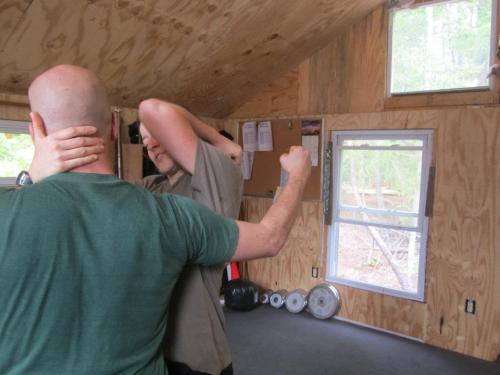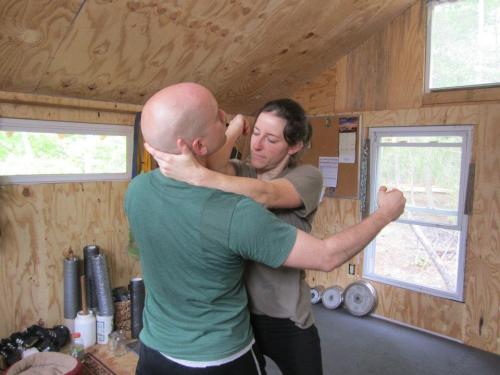A major focus of mine in both Movement Science and fighting/self-protection skills training is the concept of affordances. Below is an excerpt from the book that first introduced me to the concept, which contains a great introduction to the concept as it applies to fighting skills:
“The theory was put forth in the 1960s by an unorthodox psychologist names James Jerome Gibson at Cornell University. Gibson, who died in 1979, said animals and people view their environments not in terms of objectively defined shapes and volumes but in terms of their own behavioral potential. In other words, you immediately apprehend what you see in terms of how you think you can interact with that you see. You see affordances. Affordances make possible and facilitate certain actions. So, handles afford grasping. Stairs afford stepping. Knobs afford turning. Doors afford passage. Hammers afford smashing…
Martial artists see a different set of affordances than people untrained in hand-to-hand combat. Lapels and shoulder fabric are gripping points that afford all sorts of leverage. Elbows and wrists afford a variety of locks and twists. Highly trained martial artists see these affordances directly, as inherent parts of the concept of the body, just as an accomplished pianist sees not just individual keys but whole interrelated harmonic complexes brimming with possible melodies that can be extracted from it’s wholes, not as individual finger and hand movements (Blakeslee & Blakeslee, 2007).”
Blakeslee, S., & Blakeslee, M. (2007). The Body Has a Mind of it’s Own. New York: Random House, p. 106-108.










 are available here.
are available here.